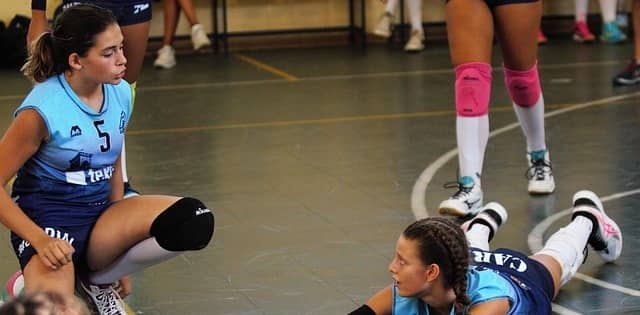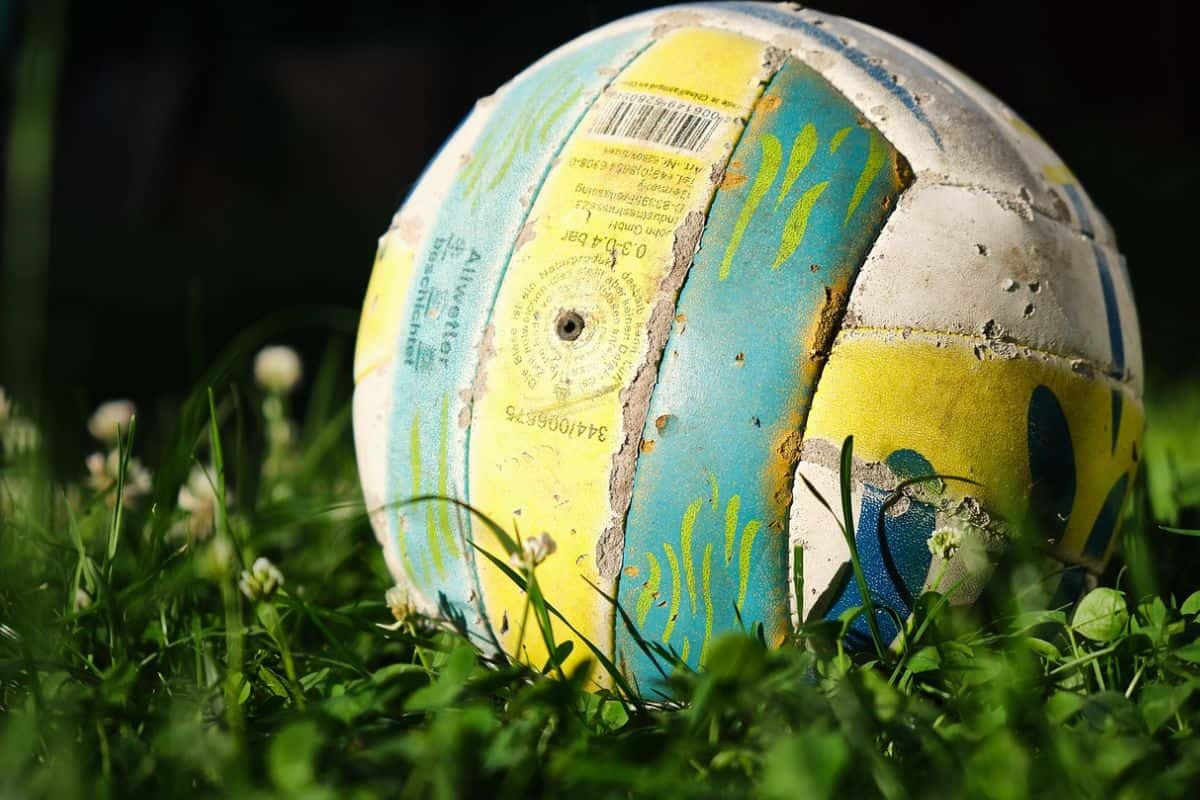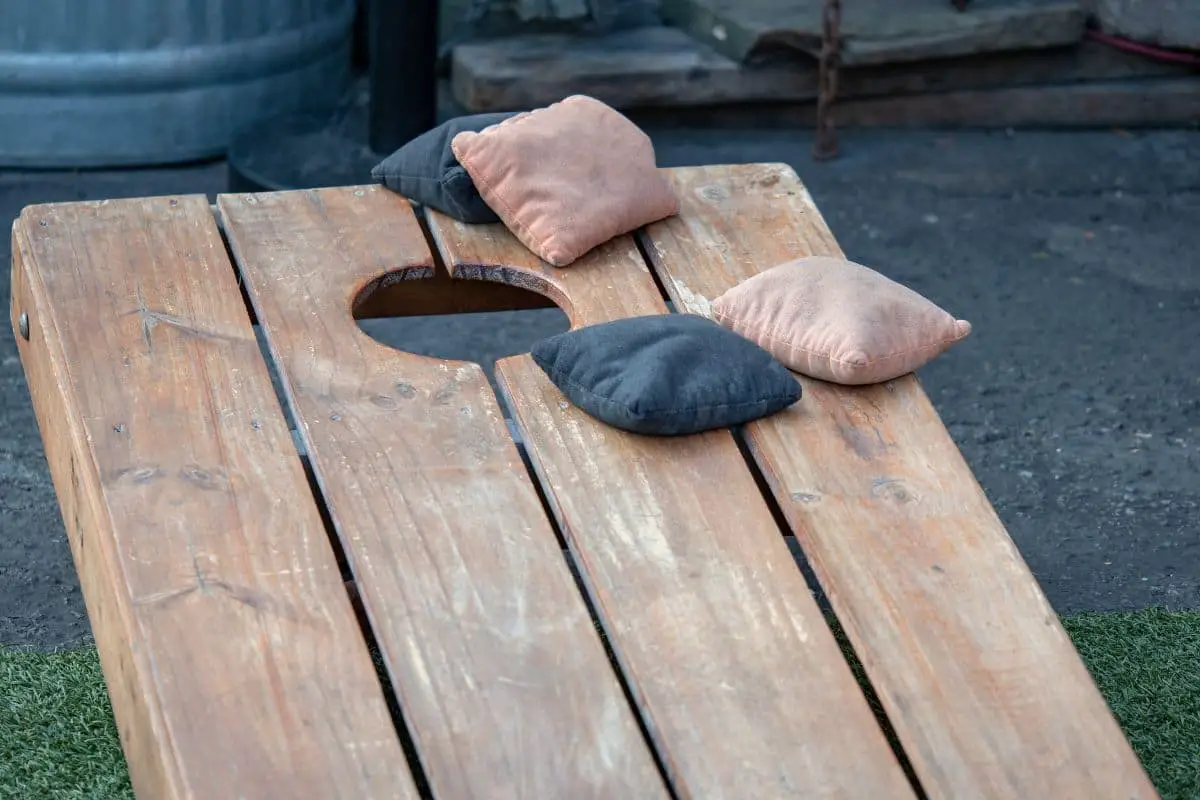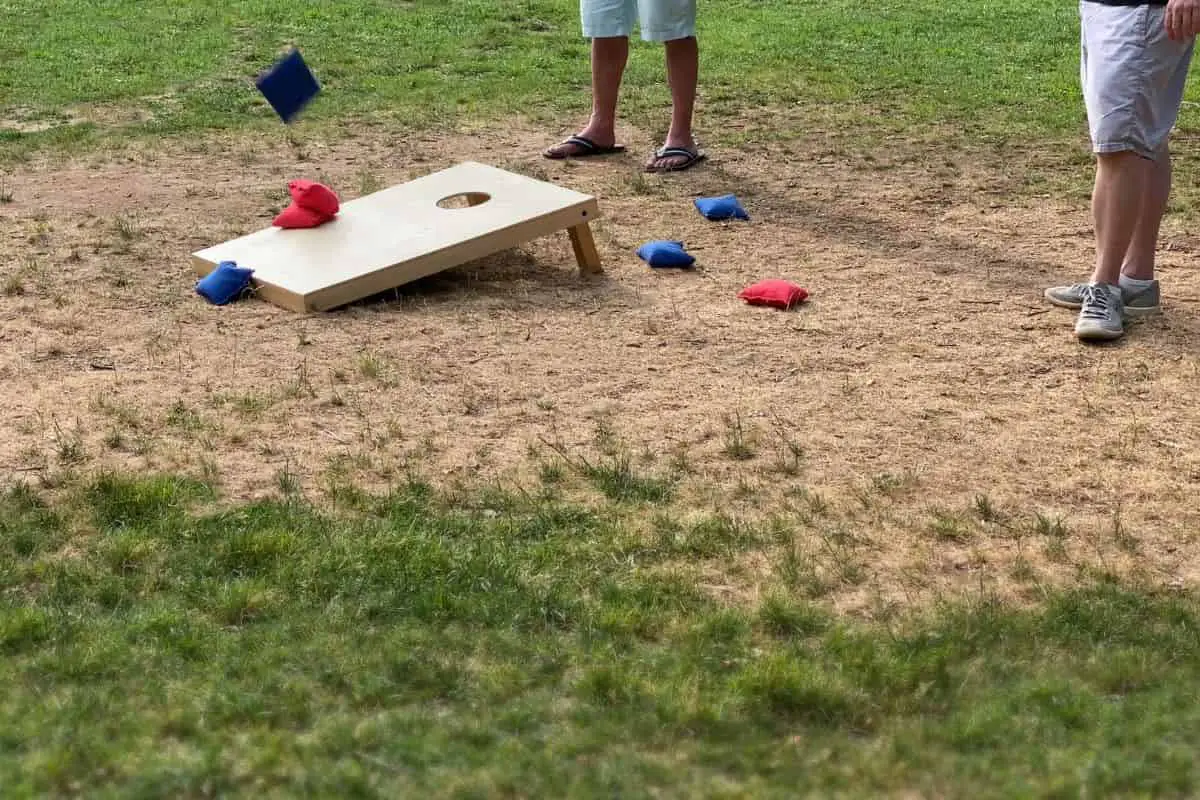When anxiety impedes our ability to play the sport we love, we notice. As a volleyball player, you train for the games. You dream of the moment that your bump, set, or spike lands the perfect play or the winning point. What you don’t anticipate is the sudden rush of anxiety, disrupting your flow. So, how do you fix anxiety before and during a volleyball game?
Before you think you are the only one dealing with sports-induced anxiety, the NCAA (National Collegiate Athletic Association) reports 85% of athletic trainers have worked with student-athletes who have anxiety disorders. It’s not just athletes. One-third of adolescents in the United States meet the criteria for anxiety disorders. The stress an athlete puts on herself due to not only the crowd but also self-expectations creates mental anxiety. The good news: you can learn to control this response.
By understanding sports anxiety, you can take a new approach when you perceive the sensation coming on. Further, by learning techniques to utilize before and after games, you can effectively control the emotion. Knowledge is power, and with sports anxiety, it is your secret weapon. The following seven techniques can help you control the severity and duration of your anxiety and refocus your mind to see positives in the tension in regards to your game.
- Preparation
- The right food
- Routines
- Self-Talk
- Breathing
- Progressive muscle relaxation
- Therapy
Before exploring each of these techniques in more detail, let’s review some key aspects of sports anxiety, like what it is, which athletes are most likely to have sports anxiety, and if it’s detrimental to athletes.

What is sports anxiety
Commonly referred to as choking, sports anxiety, or performance anxiety, it negatively impacts performance before or during a sporting event. Anxiety causes the body to tense up, which in turn negatively impacts performance. Simply put, the body cannot react at its peak capacity when in a tense state.
One way to determine if you have sports anxiety is to evaluate your game performance versus your practice performance. If you are typically killing it during practices but then get to the actual game and seem unable to hit the same level as practice, this may be due to anxiety. Keep in mind most people do experience anxiety at some point. It is when it affects your performance that red flags should start to go up.
Signs of sports anxiety include, but are not limited to:
- Racing pulse
- Quick breathing
- Dry mouth/tight throat
- Trembling hands/knees/lips
- Sweaty/cold hands
- Nausea
- Uneasy feeling
- Vision Changes
- Feeling of powerless/apprehension
- Sense of impending danger/panic/doom
- Weak/tired

Which athletes are most likely to have sports anxiety
Although all athletes are prone to feeling nervous before competitions, there are factors that increase the chances of experiencing anxiety. Individual sport athletes are more likely to experience sports anxiety. In team sports, the pressure is distributed over multiple players. Should an athlete slip up, there are others there to help recover the loss. In an individual sport, that entire pressure lies on the single athlete.
Seasoned athletes have more experience with competing than amateur athletes. They have a good grasp on how venues are set up, what individual tournaments offer, and different tactics used by opponents. They also have come to expect certain feelings before the performance. This experience allows them to better navigate performance anxiety as it occurs versus getting lost within the feeling.
Finally, home-court advantage is a factor. Playing at home allows familiarity. The anticipation of an away game, unknown locker rooms, courts, and fans drives nerves to kick in. This unfamiliarity sets up a perfect playing ground for anxiety to step in.
Mowrer’s two-factor theory and sports anxiety
In 1960, Hobart Mowrer developed the two-factor theory. In this theory, he proposed that in some situations, there are observable factors impacting a result and also unobservable factors, such as thoughts and feelings. In his experiment, he shocked a rat after a buzzer sounded. The rat then began to fear the sound of the buzzer. In this particular experiment, the rat started to go out of its way to avoid triggering the buzzer. This reaction is an avoidance response.
The danger with this is that by avoiding the stimulus, a sense of relief is achieved. When this relief sensation is repeatedly experienced, then the avoidance continues. In the case of an athlete, if the fear is failure, and the result is avoiding a particular activity that is perceived to cause the failure, the result is a more profound fear of the stimulus. For example, if a volleyball player is afraid to spike a ball for fear of the block, they may avoid spiking and, in turn, never spike. This fear can turn into anxiety leading up to and into a game.
Is all anxiety detrimental to athletes
For some athletes, the rush of anticipation and adrenaline for a game is what they live for. Once they start, the nerves dissipate, and they are hyper-focused because of the fight or flight response. It gives them the extra boost to rise up to whatever comes their way.
This same response can hinder the athlete who lacks the self-confidence in his or her skills. What is a boost to one can be a boulder to another. When athletes believe in their own abilities, they are less likely to have anxiety hold them back rather than push them forward. This self-assurance yields the apparent conclusion that an athlete’s self-confidence is not just built upon their own doing but also on the influences, coaches, teammates, and family support around them.
When surrounded by positive influences, anxiety can be seen as excitement and a necessary response which allows your body to be ready to go. Instead of focusing on the nerves holding someone back, embrace them as your body is doing exactly what it needs to for quick reaction time. Ensure that the coaches surrounding you are such who encourage you to put yourself out there, even if you mess up so that your pre-game anxiety is a positive response versus holding you back.

Seven ways to reduce stress during games
The secret with anxiety is learning how to control it for your game. If you let your nervous system get the best of you, you will either freeze up or burn out too quickly. Anticipating anxiety and having a plan for reacting to it will allow for your best result.
Try not to see anxiety as a bad thing when it comes to sports. The other extreme would be complete laziness, with no adrenaline and mediocre performance. This lack of engagement also opens you up to injury, as you would be less likely to respond timely to stimulus such as a ball coming toward your face or landing a jump. Your job is to find the sweet spot between too many nerves and not enough.
1. Preparation
Just like taking a test, you wouldn’t show up and wing it. To ensure you get the best grade possible, you study, get a good night’s sleep, eat well the next morning. A sports performance is no different.
To adequately prepare for the game, it is essential to start long before the game day. If you wait until the morning of, you will not have tested out a variety of factors that influence your game. One of these factors would be, for example, what foods are best to eat before a game to allow energy without feeling heavy on the court. Sleep cycles are equally important. Too little sleep and timing suffers, as well as the ability to shake off mistakes. Too much rest, and you risk feeling groggy during the game. Once you have determined these factors, use them to prepare you mentally.
2. The right food
What you eat makes a difference. Excessive sugar or caffeine can negatively impact your performance due to the crash that follows. There are also some competitions that excessive caffeine can be considered a drug. Make sure you know if your match has anti-doping rules and precisely what the guidelines are for those.
While stuffing yourself will leave you feeling heavy, not eating can cause its own issues. Look for low-fat meals with complex carbohydrates. Some examples of those are lentils, whole-grain pasta, yogurt, or beans and rice. Burritos are often a convenient choice for your tournament lunch.
Best Snacks for a Volleyball Tournament
3. Routines
By creating a routine before performances, you train your body to know what to expect. This preparation allows for not just the anticipation of nerves but also the balance of a set routine. Perhaps you eat a special dinner, sleep with a specific pillow, set four alarms, wake up and wear a particular pair of socks, drink coffee from your “Volleyball is Life” mug, and wear your hair in braids. If that is your routine, find solace in it. Knowing what to expect can help you ease anxiety.
Another trick for setting a routine is visualization. This technique is used by mentally running through your pre-game routine all the way through a game. You can even add in the feel of nerves running through your body to when they impact you. By adding this bit, it feels familiar and expected when it happens. Watch in your mind’s eye your body perform the perfect set or block. Complete visualizing all the way to landing a jump, the sound of your shoes on the court, and the cheers in the stands. This routine can be completed nightly or on your way to a match
4. Self-Talk
How you talk to yourself makes a difference. When nerves hit, you have the option to say, “Ugh, I am so nervous. I am going to do so badly. I am going to screw up everything.” On the other hand, you can say, “I am so excited that I have butterflies. Eeeek. This is going to be so much fun. I get to try out the serve I’ve been working on!”
The way we talk to ourselves changes our experiences. When you mess up, if you tell yourself you are stupid and shouldn’t be on the team, you will mentally check out and begin to fear the next time the ball comes your way. If you instead say how you did better than last time or dissect what you can do differently the next time, your view begins to shift to one that is growth-related.
Affirmations are worthwhile for athletes. Used as a therapy technique for all people, web pages and books are dedicated to daily affirmations. Find ones that resonate with you, print them, and post them where you can read them daily. A bathroom mirror is a good one, as you visit it multiple times while brushing your teeth. Make sure not just to read the words, but say them out loud. It will feel awkward at first, fair warning.
5. Breathing
It is no secret that breathing techniques help us to steady our brain. When we breathe in deep, the breath is actually linked to the sympathetic nervous system. This system controls the fight or flight response. When you breathe out, you activate the parasympathetic nervous system, which works to calm us down. Focus on long exhalations to trigger the body to begin calming.
Square breathing is a technique in which you picture a square in your mind. Pick a number, such as four. As you imagine going up the left side of the square, breathe in for four counts. Then, as you picture going across the top of the square, hold for four. Breathe out for a four-count as you travel down the right side of the square and then finish by holding for the final four count as you travel across the bottom of the square to where you started. Repeat the process a few times to trigger your body to release its anxiety.
Another method is belly breathing. Lay down and breathe in. Notice if your chest rises or your stomach. The goal is to eventually have your belly rise with your chest remaining relatively still. Be aware that your breath comes in through your nose and out through your mouth. Control your breathing with the aim of long, steady breaths.
Finally, alternate nostril breathing is a method in which you push in on your right nostril and breathe in through your left. Pinch both sides and momentarily hold. Release your right nostril and breath out through it. Pinch both again momentarily and hold your breath. This time, pinch in on your left nostril and breathe in through your right. Pinch both to hold your breath. Release your left side and breath out. Pinch both to briefly hold your breath, again. This method is similar to the square breathing but focuses on the nostrils during the breathing exercise.

6. Progressive muscle relaxation
When you are nervous or going through an anxiety attack, your body tenses up. This tension, even if unrecognized, will trigger your brain to actually become even more anxious. One trick is to tighten up a body part at a time, hold it for ten seconds, and then release it. Move through each of your muscle groups, tensing and releasing. By the time you have gone through each muscle group, you should feel markedly more relaxed.
7. Seek therapy
When anxiety begins to impede on daily life or if it seems as if you cannot move past the feeling, seek therapy. There are often therapists on school campuses that work with athletes and are used to treating athletes with anxiety disorders. Because of the unique pressures put upon athletes, it is helpful to work with a professional who is accustomed to the specific needs of athletes regarding anxiety.
While there was once a stigma surrounding therapy, this tool has become more commonplace. Often visits are covered by insurance with a simple co-pay. If you are a part of a school team, you may have access to free therapy. Check with your school and insurance policies before seeking care to ensure that you will not be charged more than expected. Make sure to ask how many visits are covered by your plan, as some policies cover only a handful of visits.
Anxiety is a normal human experience
With so many people experiencing anxiety, it is incredible that many athletes still feel singled out when they are in the midst of experiencing anxiety attacks. Remember, you are not alone. The techniques in this article should help you work through the anxiety, and actually use it to your advantage. Utilize tools to morph your anxiety from something that holds you back to something propelling you forward.





Leave a Reply
You must be logged in to post a comment.